The Adventures of Pinocchio (1996 film)
4 /10 1 Votes
27% Rotten Tomatoes Genre Fantasy, Family, Adventure Country United KingdomItalyFranceGermanyMalaysia | 5.3/10 IMDb Duration | |||||||||||||||||||||||||||||||||
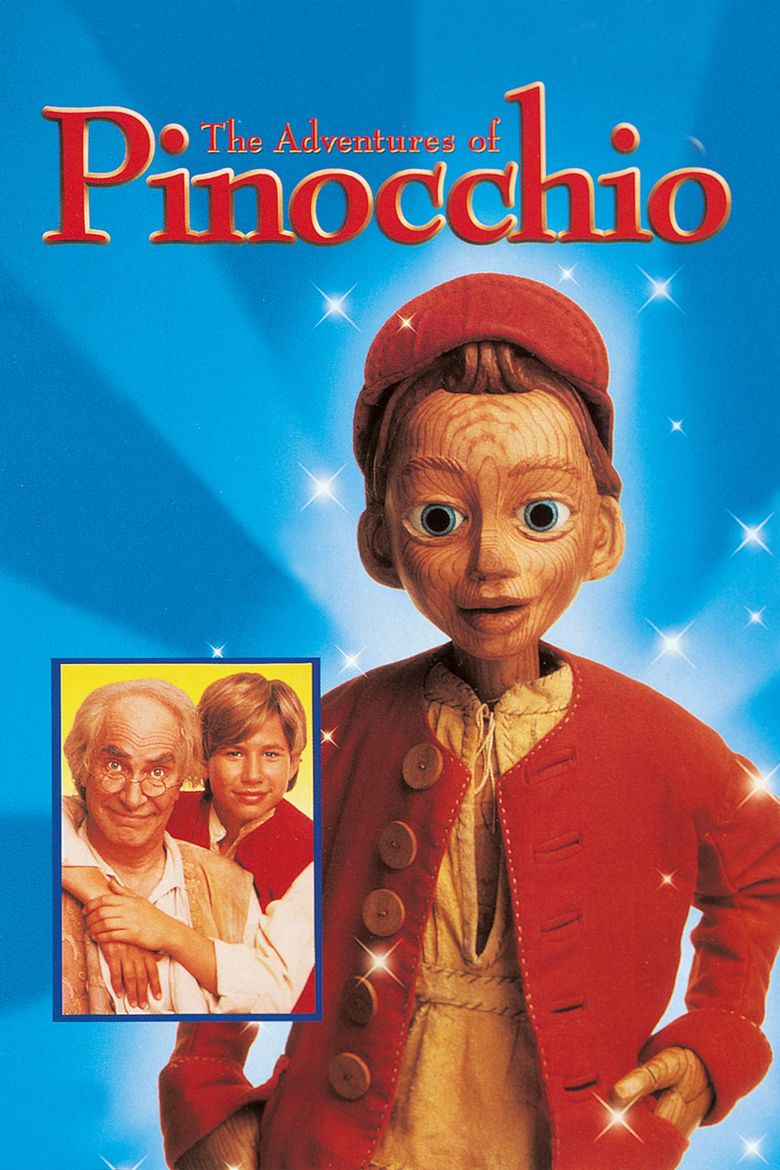 | ||||||||||||||||||||||||||||||||||
Language ItalianEnglish Release date July 26, 1996 (1996-07-26) Writer Sherry Mills (screenplay), Steve Barron (screenplay), Tom Benedek (screenplay), Barry Berman (screenplay), Carlo Collodi (novel) Songs Il colosso Cast Similar movies Pinocchio , Golden Films - Pinocchio , Pinocchio , Gremlins , Jingle All the Way , Labyrinth Tagline A new angle on the classic tale... And that's no lie! | ||||||||||||||||||||||||||||||||||
The adventures of pinocchio trailer 8 horas
The Adventures of Pinocchio is a 1996 American fantasy adventure film based on Carlo Collodi's original novel of the same name co-written and directed by Steve Barron. Barron collaborated with Sherry Mills, Tom Bender and Barry Berman on the screenplay. The film was an American, British, French, Czech and German venture produced by New Line Cinema, The Kushner-Locke Company, Savoy Pictures, Pangaea Holdings and Twin Continental Films. The film stars Martin Landau, Jonathan Taylor Thomas, Rob Schneider, Udo Kier, Bebe Neuwirth, David Doyle and Geneviève Bujold.
Contents
- The adventures of pinocchio trailer 8 horas
- Plot
- Cast
- Development
- Production
- Box office
- Critical reception
- Sequel
- References

Plot
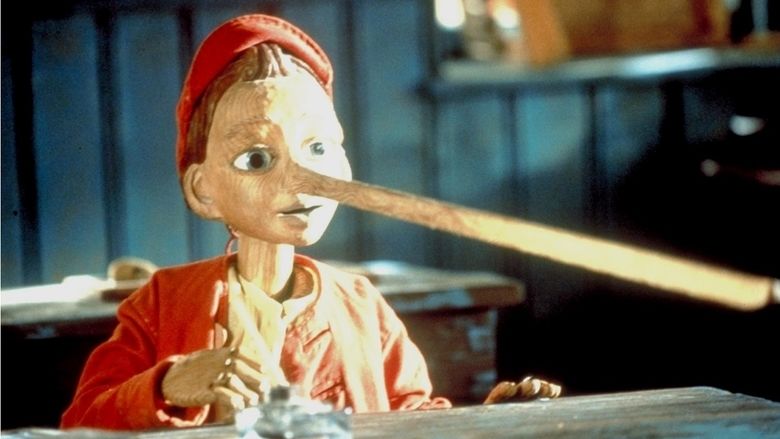
Long ago, Italian woodcarver Geppetto carves a heart into a pine tree, expressing his secret love for a woman named Leona. When he leaves, lightning strikes the tree, imbuing the heart with magic. Years later, the older Geppetto reunites with the remains of the tree and carves a puppet out of it, naming him Pinocchio. Due to the heart’s magic, Pinocchio comes to life, referring to Geppetto as his father. Pinocchio chases a pigeon outside, meeting Leona, and then a pair of thieves, Volpe and Felinet, who work for Lorenzini, a sinister theater director and puppet master, informing him of Pinocchio’s existence and sentience. Lorenzini tries to purchase Pinocchio, but Geppetto refuses to sell his son.
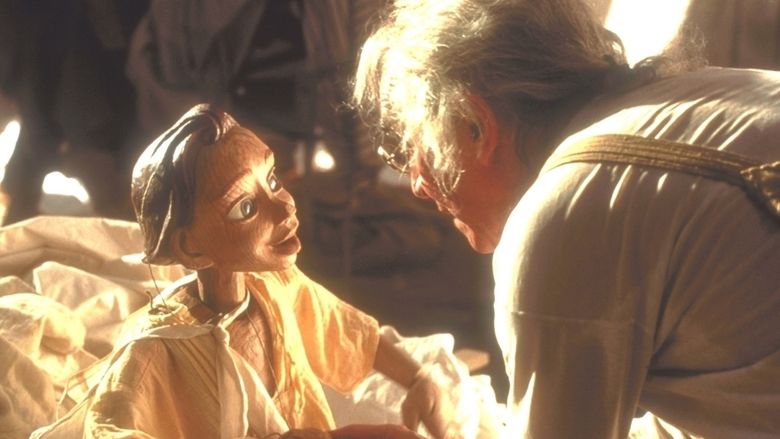
Pinocchio climbs out of a window and wanders into town, joining a group of boys in school. He gets into a fight with the rowdy Lampwick, and when lies about it, his nose grows longer, and is kicked out of the class. In bitterness, Pinocchio ends up causing damage to a local bakery, and Geppetto is arrested as a result. Pinocchio flees home, meeting a talking cricket, Pepe, who tells Pinocchio to behave in order to become a real boy. The next day, Pinocchio and Geppetto are put on trial. Unless Geppetto pays a fine he will be imprisoned. Lorenzini enters, offering to pay off the debt if Pinocchio is given over to him. Geppetto reluctantly agrees after being reminded of his poor state.
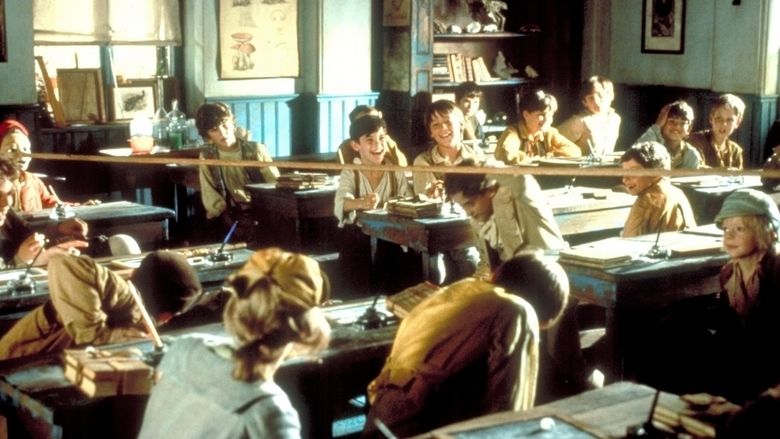
Pinocchio becomes the star of Lorenzini’s shows and is given gold coins as payment. However, Pepe helps him discover that he is ultimately unloved by Lorenzini. Pinocchio rescues several of Geppetto’s puppets from being deliberately burnt, unintentionally setting Lorenzini’s theater alight. He then leaps into a river and flees to the forest, where he decides to live. Felinet and Volpe find him, swindling him out of his coins. Pinocchio spots a stage coach passing by carrying Lampwick and other boys, travelling to Terra Magica, a hidden funfair for boys to do as they please. Meanwhile, Geppetto and Leona have been tracking down Pinocchio, lose track of him, and Geppetto rows out to sea upon finding Pinocchio’s hat on a beach.
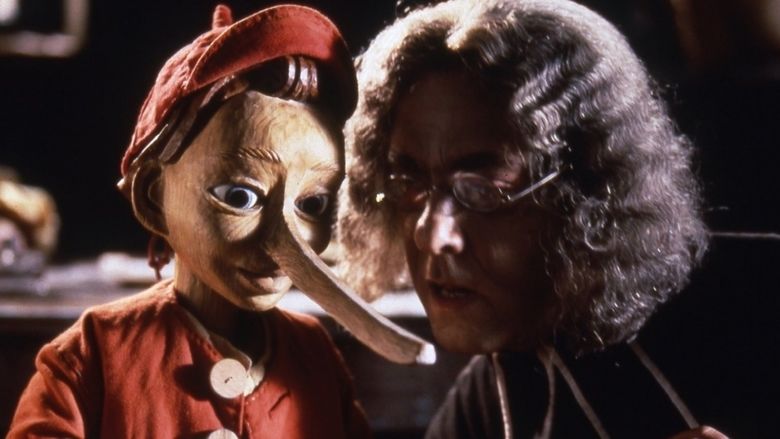
In the funfair, Pinocchio, Lampwick, and other boys go on a roller-coaster, but drinking the water of Terra Magica turns them into donkeys, symbolising their bad behavior by turning them into “jackasses”. The funfair turns out to belong to Lorenzini who sells the donkeys off to circuses and farms. Pinocchio has Lampwick kick Lorenzini into the water, transforming him into a whale. The boys and donkeys flee the funfair, Pinocchio reuniting with Leona, and he sets out to find his father. Pinocchio and Pepe are consumed by a giant whale which they recognize as the now feral Lorenzini, reuniting with Geppetto inside. They try to escape up Lorenzini’s throat, Pinocchio lying to extend his nose and make the passage larger. The whale starts to choke, breaching the ocean top, spitting Geppetto and Pinocchio out in the process. Lorenzini chokes to death, the piece of wood still lodged in his throat, and his lifeless body falling to the ocean floor.
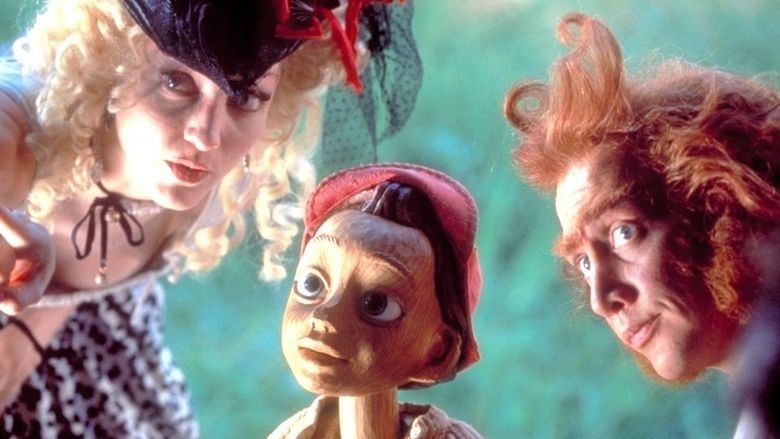
On land, Pinocchio and Geppetto embrace. Pinocchio's tears flow, the tears landing on the heart carving, the same magic force from before transforming him into a real boy. The two embrace once more over the miracle. Pepe congratulates Pinocchio before leaving, wanting to rest from the whole ordeal, but promising they will see each other again soon. On the way home, Pinocchio tricks Felinet and Volpe into drinking the magic water, and they are later revealed to have transformed into a cat and a fox (their namesakes) which results in them getting corralled by a farmer, collared, and kept as pets. The donkeys transform back into boys by reforming one by one, Geppetto and Leona marry, and Pinocchio gives his father a log he found to carve into a girlfriend.
Cast

Development

Nearly ten years before the film was eventually made, Director Steve Barron and Jim Henson were considering the idea of a live-action version of Pinocchio. They approached Disney with this idea, but Disney turned down the project. Years later, producer Peter Locke sent Barron a script for a film based on the Carlo Collodi novel. Barron heavily rewrote the script. The project then finally got off the ground.
Production
It was shot in Croatia, Prague, Český Krumlov, and High Force. For the character of Pinocchio, a complex animatronic puppet created by Jim Henson's Creature Shop was used with stop-motion. Pepe, the talking cricket, is computer-animated. One of the biggest changes in the filming was replacing Wallace Shawn, with David Doyle as the voice of Pepe the talking cricket. However Shawn's voice as Pepe can still be heard in the trailer for the film and he is even credited in the trailer.
Rachel Portman's score features saxophone solos by David Roach.
Box office
The Adventures of Pinocchio was made on a budget of $25 million. The film had a poor performance in the United States, opening at #8 on its first week, then grossing $15,094,530 at the box office.
Critical reception
Critically, the film received a "rotten" 27% rating on Rotten Tomatoes. On the television review series Siskel & Ebert, Roger Ebert was disappointed with the film, while Gene Siskel praised the special effects. He remarked that he believed the film is a faithful adaptation of the book, as opposed to Disney's interpretation, which strayed significantly from the it.
In her seminar "The Persistent Puppet: Pinocchio's Heirs in Contemporary Fiction and Film," Rebecca West finds the film to be relatively faithful to the original novel, although she notes major differences such as the replacement of the Blue Fairy by the character of Leona.
Sequel
A straight-to-video sequel was released in 1999 called The New Adventures of Pinocchio. Landau reprised his role as Geppetto, while Kier was recast as Lorenzini's estranged wife, Madame Flambeau (they were the only two actors to return in the film). Gabriel Thomson played the title role and replaced Jonathan Taylor Thomas. It was shot in Luxembourg City, Luxembourg.
References
The Adventures of Pinocchio (1996 film) WikipediaThe Adventures of Pinocchio (1996 film) IMDbThe Adventures of Pinocchio (1996 film) Rotten TomatoesThe Adventures of Pinocchio (1996 film) themoviedb.org
